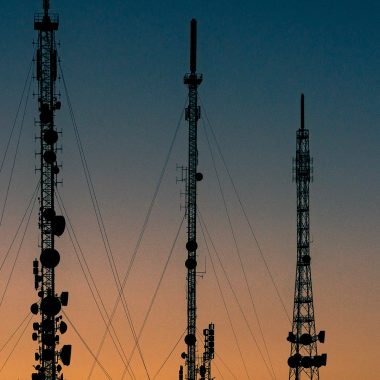On 18 November, SpaceX tested its giant Starship rocket for the second time. Although both parts of the craft exploded after just a few minutes of flight, Elon Musk’s project is making significant progress. Will it be enough for NASA to use for its missions to the moon, scheduled for 2025? The American space agency has every reason to be concerned.
Six months after its first flight, which ended in an explosion, Starship’s second test has once again resulted in the explosion of the spacecraft’s two stages. These could not be recovered, contrary to what was envisaged in the specifications. But there was an improvement. This time, the two parts of the spacecraft separated correctly, and the Starship module made it back into space. What happened during this eight-minute flight? Does this experience call into question NASA’s Artemis III lunar mission, scheduled for 2025?
🚀 Décollage de Starship, la plus grande et la plus puissante fusée jamais construite de @SpaceX, après une première tentative infructueuse au printemps.
La fusée géante d’Elon Musk réussira-t-elle sa mission ? pic.twitter.com/qPNuydt9kx
— franceinfo (@franceinfo) November 18, 2023
An unpublished version of ‘the largest and most powerful rocket ever built’, according to a tweet from Franceinfo, was ready on 18 November in Boca Chica (south Texas). ‘It’s a monstrous rocket, a technological challenge to get off the ground’, explained Chloé Carrière, an aerospace engineer with a degree from EPFL, to the newspaper 20 Minutes. The operation seemed to be off to a good start, since all 33 engines of the propulsion stage, dubbed SuperHeavy, remained on. As a reminder, some engines had shut down during the first test. The 121-metre rocket lifted off at 7.03 am (2.03 pm in Paris), propelled by its 7,600-tonne engines.
Four minutes later, SuperHeavy and the Starship module separated correctly at an altitude of 75 kilometres. Then the situation got out of hand. According to Chloé Carrière, ‘the booster part failed to return to land, it’s still not very clear whether this was planned or not’. Reputed for its reusable Falcon 9 launchers, the SpaceX group will likely want to eventually reuse the huge and expensive SuperHeavy, which exploded during its descent. Finally, contact with Starship was broken at 7.11am, when the flight was supposed to last 90 minutes. The module, which had briefly passed into space, was due to return to Hawaii. It finally exploded in its turn.
Can we talk about a failure for SpaceX?
Clearly, SpaceX is not sending a good message by ending this test with a double explosion and charred debris. Many of the posts on X reflect observers’ disappointment with the mega-rocket.
Elon Musk nous montre encore une de ses fusées qui s’eclate contre le firmament, donc soit il se fout de nous, soit il veut nous montrer quelque chose…🙄🔮#Starship pic.twitter.com/pO9DyOCvqn
— Jérôme F… 🌟 (@ZippoJeje) November 18, 2023
Yet this second flight is far from being a total failure. “To borrow the English term successful failure, let’s say we’re on a successful failure, asserts Chloé Carrière. An observation shared by Thomas Pesquet: “Shivers down my spine today watching the successful launch of the #Starship! Impossible not to be enthusiastic even if not everything is perfect of course. BRAVO to the @SpaceX teams who are working like crazy in Boca Chica”, said the astronaut on X.
A lot of things have been validated in terms of the modifications undertaken by SpaceX, such as the launch pad, the simultaneous ignition of the 33 engines or the separation of the two stages. The Starship module also reached space by crossing the Kármán line (the boundary between the Earth’s atmosphere and space – 100 km above sea level), whereas the first rocket had had an erratic trajectory at an altitude of just a few kilometres.
The launch pad has also remained intact, despite having suffered major damage six months ago. Enough to satisfy Elon Musk. “I just inspected the Starship launch pad and it’s in great shape! No refurbishment needed on the water-cooled steel plate for the next launch. Congratulations to the @Spacex teams for engineering and building such a robust system so quickly!”.
Just inspected the Starship launch pad and it is in great condition!
No refurbishment needed to the water-cooled steel plate for next launch.
Congrats to @Spacex team & contractors for engineering & building such a robust system so rapidly! pic.twitter.com/py5m1uhtEi
— Elon Musk (@elonmusk) November 19, 2023
The moon in 2025, an illusory date?
Despite all these positive points, however, Starship’s development does not seem fast enough to stick to the plans of NASA, which has signed a contract with SpaceX. A revised version of the rocket is to be used as a lunar lander to deliver astronauts to the Moon for the first time since 1972. Named Artemis III, this mission is officially scheduled for 2025. Seeing the module explode with two years to go may raise serious doubts about the realism of the project.
Although the rocket has been perfected in seven months, the timetable looks increasingly untenable. A tight schedule, which was already in motion last spring when SpaceX had not yet made its first flight. In these conditions, Artemis III is likely to be postponed until 2026 or 2027. The next few months will be closely watched to see how SpaceX progresses on Starship and, above all, how fast.
The boss of the US space agency, Bill Nelson, nevertheless congratulated the company on the ‘progress’ made on this launch. “Spaceflight is a bold adventure that requires a positive mindset and bold innovation. Today’s test is an opportunity to learn, and then to fly again, he said on X.
In addition to the Moon, Elon Musk wants to make Starship a ‘widespread means of transport to any destination in the Solar System’, Mars included. The billionaire plans to establish an autonomous colony on the Red Planet to make humanity a multi-planetary species.
By Nicolas Ruscher










